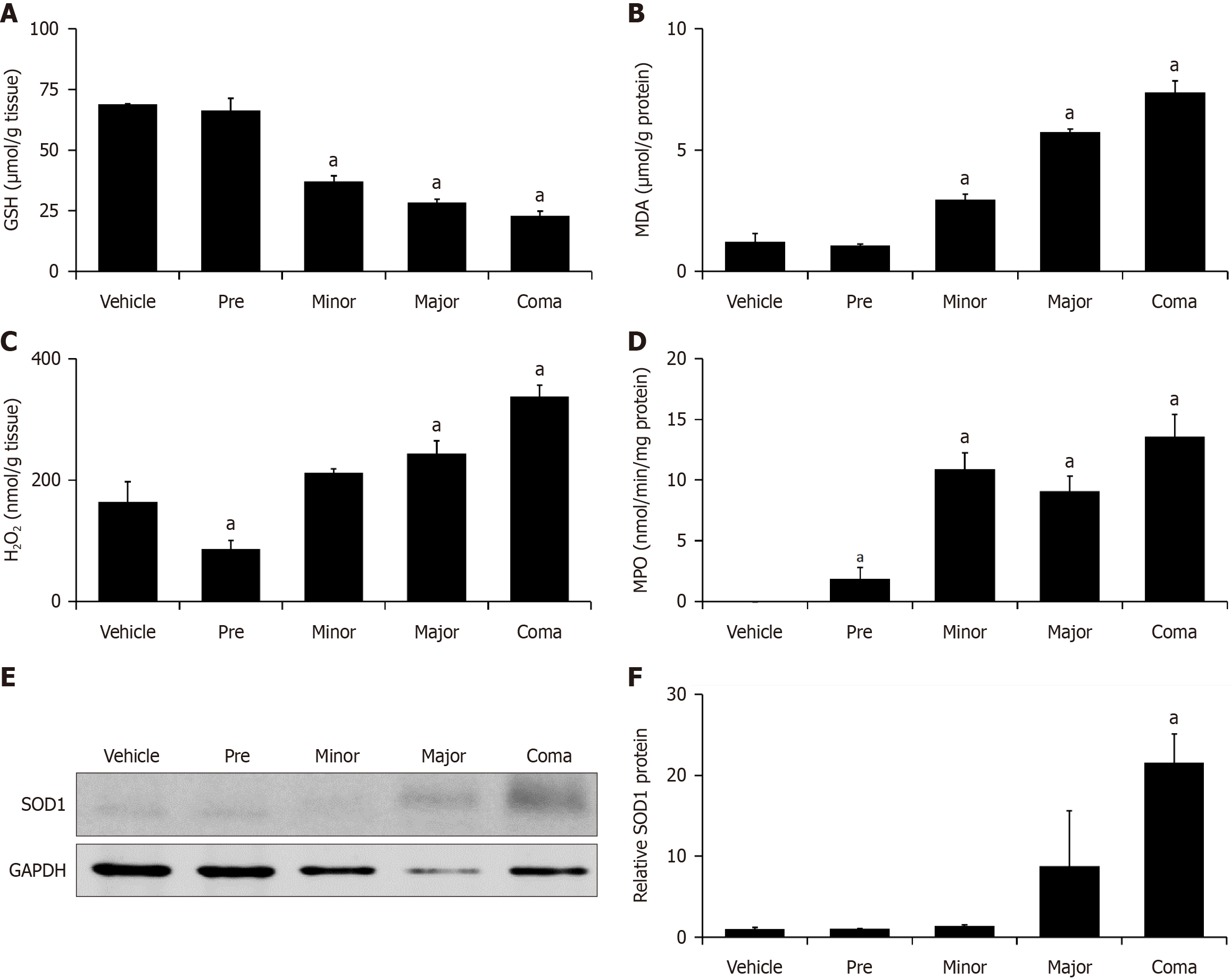Copyright
©The Author(s) 2025.
World J Gastroenterol. Mar 28, 2025; 31(12): 103952
Published online Mar 28, 2025. doi: 10.3748/wjg.v31.i12.103952
Published online Mar 28, 2025. doi: 10.3748/wjg.v31.i12.103952
Figure 3 Azoxymethane-induced liver injury is associated with increased oxidative stress.
A: Hepatic GSH concentration expressed as µmol per gram of liver tissue in mice treated with vehicle or azoxymethane (AOM) at the pre, minor, major and coma time points; B: Liver MDA concentration in µmol normalized to total protein concentrations in mice treated with vehicle or AOM at the pre, minor, major and coma time points; C: H2O2 concentration in nmol per gram of liver tissue in mice treated with vehicle or AOM at the pre, minor, major and coma time points; D: Hepatic MPO activity reported as nmol of MPO per minute per mg of protein in mice treated with vehicle or AOM at the pre, minor, major and coma time points; E and F: Representative immunoblot and quantification of immunoblots for SOD1 in liver homogenates from mice administered vehicle or AOM at the pre, minor, major and coma time points. GAPDH is used as a protein loading control. n ≥ 3 for each group for all analyses. aP < 0.05 compared to vehicle-treated mice.
- Citation: Bhattarai SM, Jhawer A, Frampton G, Troyanovskaya E, DeMorrow S, McMillin M. Characterization of hepatic pathology during azoxymethane-induced acute liver failure. World J Gastroenterol 2025; 31(12): 103952
- URL: https://www.wjgnet.com/1007-9327/full/v31/i12/103952.htm
- DOI: https://dx.doi.org/10.3748/wjg.v31.i12.103952









